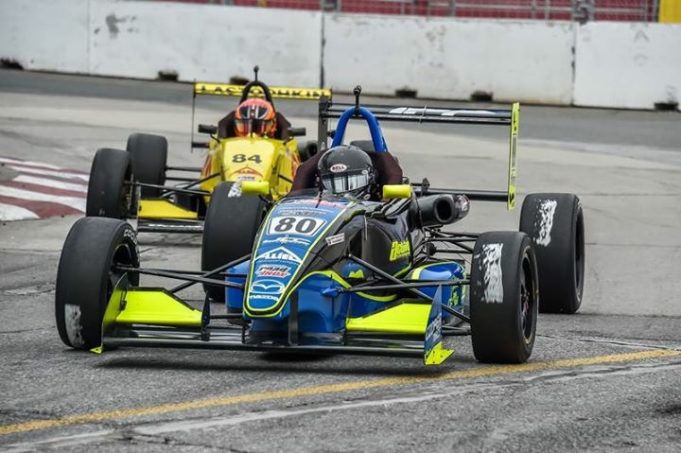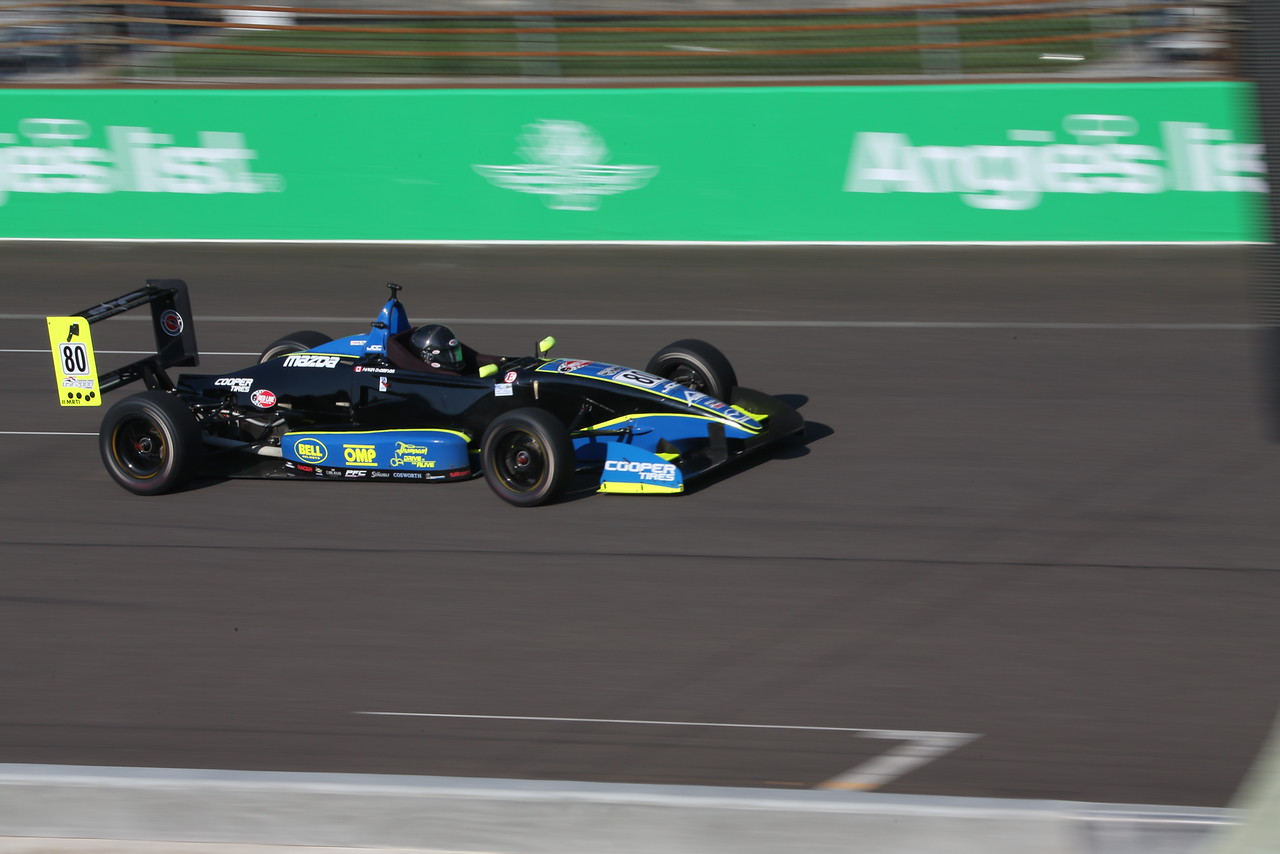Seventeen year old race car driver Parker Thompson of Red Deer has been taking a sort of summer school this year and he seems to be a quick learner.
2015 was his first true year in cars after graduating from the kart racing level and he’s pleased with how things have played out to this point.
“We’ve had a lot of good races and just recently I got back from Ohio where we competed in three races and we were top five every single race which is a really good result there,” said Thompson who races for the JDC Motorsports team based in Minneapolis.
The most important lesson he’s learned so far after stepping up into this class of racing against more experienced drivers is learning how to drive a car instead of a cart.
“It’s a lot different when you’ve got suspension and 175 horsepower to deal with and over a thousand pounds of downforce. There’s a lot of different changes to my driving style that had to be made in order for me to compete at the top level.”
“What’s taken a long time is actually working with my engineer. He’s a very experienced engineer. He works professionally and does a lot of engineering with Daytona prototype cars and the Daytona 24 hours and a lot of sports car stuff. So for him to come down to the USF2000 it’s been a bit of an adjustment for both him and me.”
For example, his feedback on what the race car is doing isn’t quite as advanced so Thompson says he has stepped up his information while the engineer has dumbed-down the situation.
This way, he can keep learning about the car and they both are on the same page when it comes to solving problems.
“That’s the biggest thing in a race weekend, getting the car dialed in.”
There are plenty of good drivers on the circuit, most of them in their early to mid twenties but what separates them is the car and what feedback you can provide.
“It sounds kind of funny but you feel it in your butt,” he said. “All race car drivers kind of describe it that way. You’re feeling it in your butt if the car has oversteer or understeer, if you need a shock change, all the different changes we do.”
Drivers only get two practice sessions before each race which last around 30 minutes so it doesn’t leave much time to set up the car so you need to really be on your game, he said.
Another wrench in the works is going from race tracks he knew through experience to tracks new to him.
“The current championship leader has been in this series for three years. He knows every track pretty much like the back of his hand,” he said. “For me, we pretty much have to start from zero and build our way back up. So that’s extremely difficult too, to have to learn all the tracks.”
It’s been a real test of patience as well for the young driver. He has gone from racing karts where he was third in the world, winning races and competing for wins on a somewhat regular basis. The switch to cars has changed that dramatically with Thompson going head to head with drivers who have spent several years at or near the top of their division.
“Top fives are huge for me. I’m super happy with that but the first race of the season if I thought top fives were good, my perspective on things has changed.Top fives for a rookie is the best a rookie has done for a long time in this series but going into it I was so competitive and sure of myself that I could compete for wins. It set me back a little bit.”
He still wants to taste the winner’s circle and understands there is work to do. Thompson says if you are not trying to improve then there is no point in trying for a career as a race car driver as it’s extremely competitive.
He trains six days a week in order to stay in shape. Something he feels most people don’t relate with the sport of racing.
“I’ve played hockey all my life. I’ve done a lot of different things and racing is right up there with that. It’s just a different type of fitness but it’s just as hard as anything else.”
Generally racers are in the car for over an hour at a time and most places are generally over 100 degrees fahrenheit which adds to the stress of keeping the car on the track.
“When you’ve got three layers of fireproof fabric on, plus right next to a boiling hot engine it definitely takes its toll on you.”
Racing can come down to thousandths of a second so being fit means being alert and that can mean the difference between winning and losing.
“If you want to put any athlete in a car they will probably go out and do laps and that’s fine. But when you’re racing for 60 laps straight and you need to hit your marks on every lap you have to be fit because you can’t make a mistake.”
“As soon as your body starts to fade that’s when your mind fades and when your mind fades in racing it’s pretty much game over,” he said.
Another dimension of Parker Thompson is his involvement in schools which began at the start of this year.
He wanted to do something which would allow him to give back to Red Deer and Alberta for the help he’s received in order to pursue his racing dream.
“I wanted to stop distracted driving. I could see it’s an emerging problem. It goes right with racing. I mean I’m alert driving a race car and you need to be alert driving the streets.”
With the help of former Red Deer MLA Cal Dallas, the provincial transportation department, and Global Traffic Group the program is on the road.
The goal is to speak to students in about 100 schools over the next two years regarding the dangers of distracted driving.
This season wraps up at Laguna Seca racetrack in California September 11th and then he heads to the schools for his talks.
As for next season there are a few options on the table for Thompson as to what is best for his career but he has np regrets making the move up to racing cars.
“We kind of knew the competition would be stiff in USF2000 but in my mind I was ready for it and it definitely made me push harder than I’ve ever pushed in order to compete.”
Whatever is decided during the off season one could safely bet when Thompson hits the track next season it will be at full speed.










































